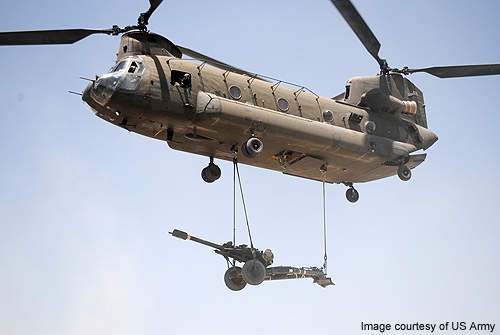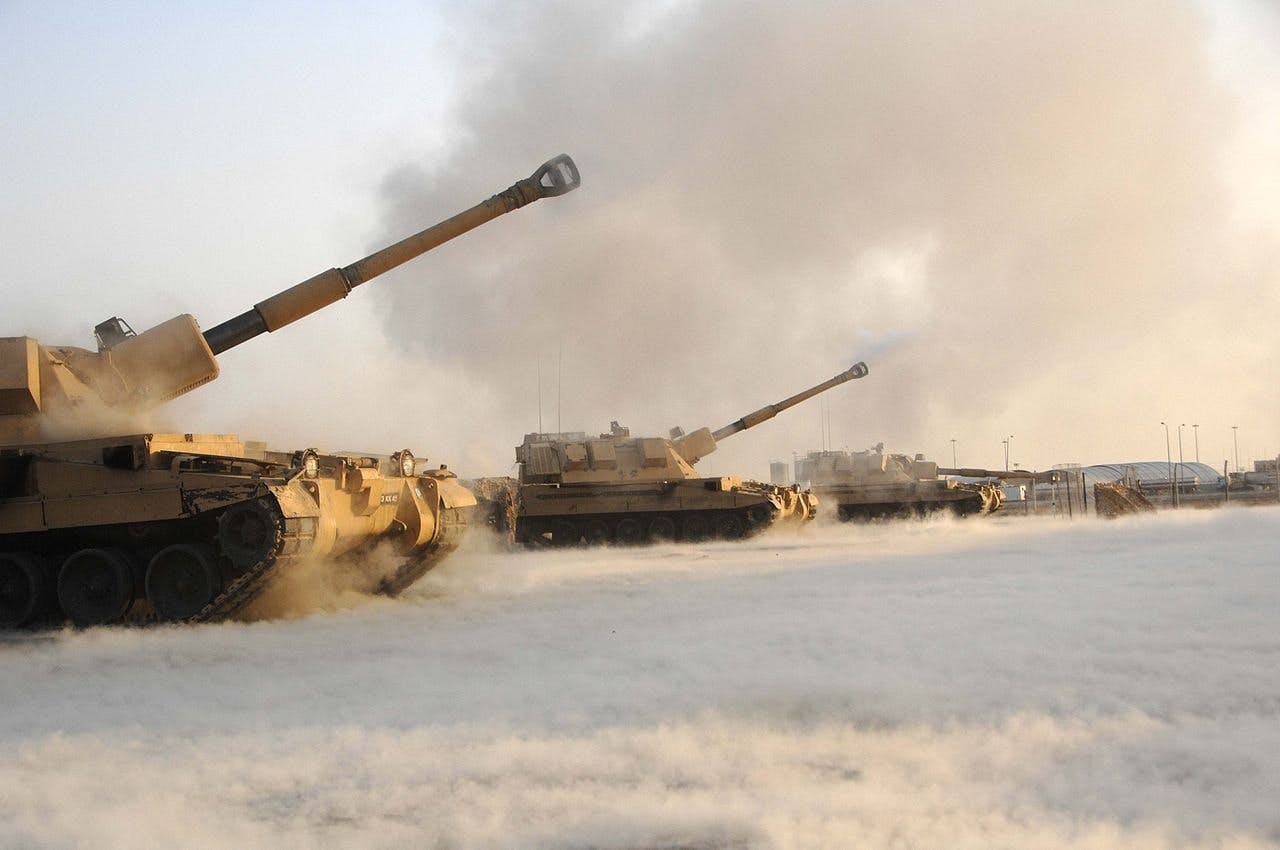Exactly that. Is it handier to have a 105 and an extra ~2000 kg of capacity to do other things with, or a 155?
Range and terminal effects matter.
The former makes a very important difference as to what you are able to do in any given tactical scenario. Range becomes even more important when you think in terms of the size of an AO rather than just a linear distance. We couldn't have provided the fire support needed in Afghanistan - especially the early years - with 105s unless we had deployed three or four times the number of guns. A 105mm with a range of 17 kilometres covers an area of 908 square kilometres. A 155mm with a range of 30 kilometres covers an area of 2,827 sq km or three times the area of a 105mm.
In airmobile operations this gives you the ability to position your guns further away from the operational area providing a higher degree of security - and therefore availability - of the guns. In counter insurgency type of operations it means that the guns can settle into an FOB and provide a high degree of 360 degree availability to the force throughout its AO.
The 155mm is now the Western go-to round. It's a bigger round and type for type - ie HE v HE, WP v WP etc - you can deliver a bigger effect. In addition, there is not much development going into improving 105mm types as compared to 155mm. Newer 155mm rounds are significantly more effective than the Cold War standard rounds and development - particularly n the nature of precision munitions - is ongoing.
So this -
Having each Bde running their Bns through MRP would drive the army into the ground in all likelihood.
I doubt that there would be a significant difference. I'm of the view that MRPs in and of themselves are a sign/symptom of an army already run into the ground. The MRP system is used to compensate for understrength units and insufficient equipment which is serviceable. Reorganizing into a light brigade and two mech brigades would not change that.
WRT to the Light Bn readiness, we essentially already do rotate them through readiness so I don’t really know what would be achieved.
The entire structure of the army at present is designed to facilitate brigade by brigade rotational battle group generation. Canadian brigade groups, in and of themselves, are not doctrinal tactical elements. Under the concepts created by Advancing with Purpose, they are flexible structures that are designed to be ad hoc organized for a mission using a building block system. It goes back to that old trope that when you are a jack of all trades then you are a master of none.
Reorganizing into a light brigade and two mech brigades would simplify logistics and training within each brigade. More importantly the brigades themselves would be able to develop their own expertise in either light or mech operations and become entities that could be deployed as an doctrinal entity without reconfiguration.
In our current mission set, the light brigade would generate the fly-over light battalion required for Latvia and be responsible for having a constantly ready Global Response Task Force.
The two mech brigades would have the responsibility for generating the mech components of the Latvia-based brigade.
I'm of the view that there should be no rotation of the brigade headquarters into Latvia. That should be a new brigade headquarters staffed by the posting in of the core of both the brigade headquarters and core signals squadron and logistics staff, supported by either rotational augmentees or, IMHO preferably, fly-over surge personnel.
It's not changing the Canadian brigade structure that will burn out the Canadian army. It is Latvia and continuing on with the current structure that will burn it out and prevent our brigades from becoming efficient tactical entities rather than just force generators.








